List of Authors
>>About this blog
Recent blog post
|
1.
Nov. 22, 2013 14:00
This fall, I went with a fierce dash, and it's already winter. At this time, I couldn't respond to the sudden change of down from T-shirts.
Today, I visited "Oedo Nihonbashi-tei" to listen to the women's Chushingura. I heard from a friend who loves rakugo saying, "It's a very good size hall to listen to rakugo as small," but this is the first time I have stepped into it. It is a homey impression of 20 seats in Hiradoma and 50 to 60 chair seats, and it seems that many customers are familiar with it, and it is nice to hear a conversation called "Yaayaa" with the guide! That's right.
People's beliefs were strong, and I was watching Bunraku performances, but I thought until last week, "Gitayu must be a thick man's voice." For the first time in a course held by the National Theater for members, my preconception, which was overwhelmed and stupid after listening to "Horikawa" of "Wome Gitayu", was completely overturned.
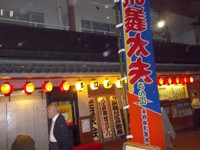
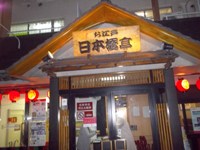
Only "Women's" are performed, "Sixth Dan selling Dan", "Eighth Dan Dogyo", and "9th Dan Yamashina Kani". After all, it is luxurious and luxurious, as if you are watching the art performed in a parlor, "the stage is near". The breathless interaction between Komanosuke Takemoto, a living national treasure, and the popular young Koshiko Takemoto, was wonderful and it was two hours in a flash. During the Edo period, "Daughter Joruri" and "Ogitayu" were often subject to crackdowns when they disturbed customs, but it is well known that Soseki and Naoya Shiga in the Meiji period were fans. The fan clubs of this era, "Dokuren" and "Purchasing Ren" are the fans.
It seems to be the etymology of "chasing" still alive today. "I don't like eating" is a loss.
In addition to regular vaudeville at the Rakugo Arts Council, Oedo Nihonbashi-tei offers a variety of entertainment with a focus on classical performing arts such as talks, Gitayu, Shinnai, Kouta and Nagauta. www.ntgp.co.jp
Edo Nihonbashi-tei: 3-1-6 Nihonbashi-Nagatani Building 1F TEL3245-1278
2 minutes from Exit A10 of Mitsukoshimae Station on the Ginza Line, 2 minutes from Shin-Nihonbashi Station on the Sobu Line.
[Many Books]
Nov. 21, 2013 14:00
Tuesday, November 19 I went to a long-established tour of "Town Walking".
We gathered at Kodemmacho Station on the Subway Hibiya Line and went around Otemmacho, Honmachi, and Kofunecho.
There are a total of 12 participants, including 9 men and women, 2 correspondents, and 1 tourist association.
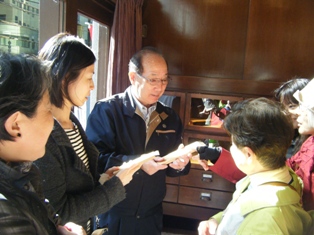 First of all, from "Edoya". First of all, from "Edoya".
A brush shop that has continued since 1718 (1718). The president explained himself.
I have a brush for lacquer and the material is a woman's hair.
Also, the brush for dyeing was deer hair, and the hair was hollow, so the dye contained good, so it was used.
The exhibition shelves on the left hand of the president are said to be prepared for the "Chuo-ku Machikado Exhibition Hall".
The next thing I visited was "Ozu Washi" in Nihonbashi Honmachi.
Founded in 1653 (1653), when he was the fourth shogun Ietsuna Tokugawa.
Currently under earthquake-resistant construction, Mr. Kurata (50 years of service!) At the natural pavement on the second floor He explained the difference between Japanese paper and Western paper in water.
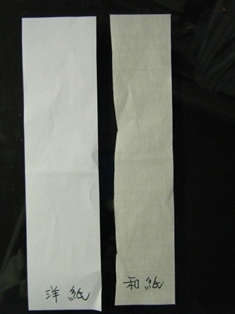
The left is Japanese paper and Western paper.
Squatting this
Pull and pull, and actually use strength by ourselves.
I've confirmed it.
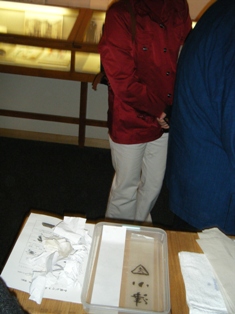
The photo on the right is
Where Western paper and (Ozu) Japanese paper are soaked in water
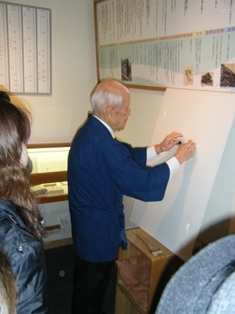
This photo shows the strength of each piece of paper by pasting soaked Western paper and Japanese paper on the panel.
The paper was ragged and could not be pasted.
In addition, many paper-related materials such as ancient document and Daifuku Book were on display.
I couldn't see it slowly due to time, but I think it's a good idea to see it again.
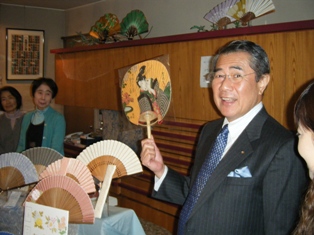
Finally, I visited "Iba Sen".
It was founded in 1590 (1590) when Ieyasu Tokugawa first entered Edo. Mr. Iba Sen also explained Mr. Yoshida himself.
It deals with fan fans and fans, and it was once a publisher of ukiyo-e.
He enjoyed talking about a fascinating story about Dansen-e.
This "long-established course" has ended with this "Ibasen".
A long-established tour from 10:00 to 11:30. The weather was fine, and it was not so cold and I felt the goodness of a long-established store.
[Sam]
Nov. 15, 2013 09:00
 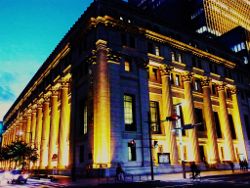 On November 8th, Christmas illuminations in the Nihonbashi area are lit. On November 8th, Christmas illuminations in the Nihonbashi area are lit.
This year's theme for Colled Nihonbashi, Choledo Muromachi, and Mitsui Tower is "Sakura-colored Hikari".
The lighting period is until January 13, next year. Lighting time is from 16:00 to 24:00.
Prospered as a commercial and cultural center since the Edo era, and based on a city where tradition and newness coexist, with the motif of "cherry blossoms" as a flower that symbolizes the hearts of Japanese people, with gentle cherry blossoms and white LED light, The reason to express the delicate, gorgeous, and beautiful winter cherry blossoms wrapped in snow crystals is expressed.
<Cored Muromachi> <Cored Nihonbashi> <Mitsui Tower>
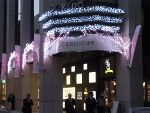 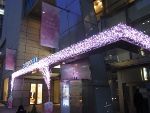 
[Sam]
Nov. 10, 2013 09:00
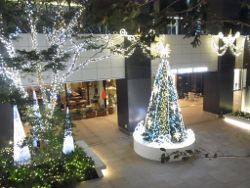 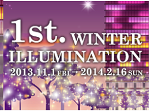
November 7th is winter according to the calendar. On November 1st, "1st. WINTER ILLUMINATION" lights up at Kyobashi's Tokyo Square Garden.
It is said to be one of the largest illuminations in Ginza and Chuo-dori.
The lighting period is until February 16, next year. Lighting time is from 16:00 to 24:00.
Tokyo Square Garden will be completed on March 17 this year (commercial zone will open on April 18). This is an environmentally friendly large-scale complex that combines cutting-edge environmental technologies such as solar power generation, underground heat utilization, and BEMS (Building Energy Management System). The two blocks are consolidated, and the center of the first floor of the building is the same as the old ward road. Opened as a penetration road of the same size. Directly connected to the subway Kyobashi Station, 30 shops and restaurants, and 1,000 tsubo office space on each floor of a pillarless space that supports various office layouts, the Kyobashi Hill, a multi-layered greening space with an area of 3,000 m2, is created not only to enjoy the flowers of the four seasons, but also to the cool down of the city.
The Chuo Ward Environmental Information Center is located in the Kyobashi Environmental Station on the 6th floor.
This time, the B1F, 1F, 2F, and 3F parts of Kyobashi Hill are lit up, and you can enjoy the overlapping sparkle of light.
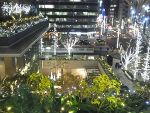 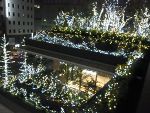 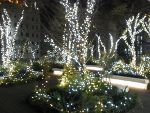
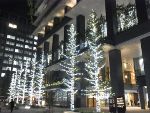 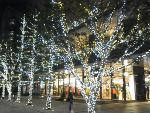 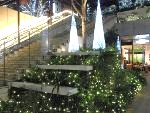
[Sam]
Nov. 7, 2013 09:00
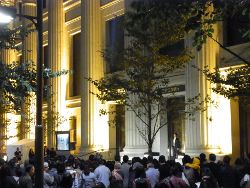 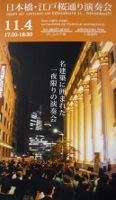 On November 4th, the fifth Nihonbashi-Edo Sakura-dori St. concert was held at Edo Sakura-dori St., lined with historical buildings, along with the main building of the Bank of Japan, Mitsui Main Building, and the Mitsukoshi Nihonbashi Main Store, a designated Historic buildings. (17:30~18:30) On November 4th, the fifth Nihonbashi-Edo Sakura-dori St. concert was held at Edo Sakura-dori St., lined with historical buildings, along with the main building of the Bank of Japan, Mitsui Main Building, and the Mitsukoshi Nihonbashi Main Store, a designated Historic buildings. (17:30~18:30)
This time, it was held as part of the "Open Architecture" linked project "Chuo-ku Marugoto Museum", and while the magnificent columns of the Mitsui Main Building were lit up, Italian tenor Stefano Rodora's Italian song The singing voice echoed, and the end ended with Oai chanting of "Furusato".
✎In "Open Architecture", the splendor of towns and buildings is considered to actually visit and experience the rich atmosphere of the space, and the essence of music to further enhance the appeal of the space, Since the first event, we have been working on a concert set in buildings with the aim of making people feel.
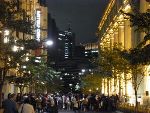 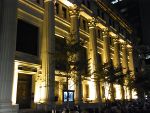 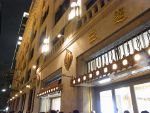
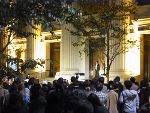 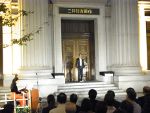 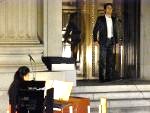
[Ashuan husband]
Nov. 5, 2013 09:00
In the evening, I had a little time before the drinking party, so after looking at the outdoor goods store at Tokyo Square Garden, I went to see the studio of Chuo FM. I've been to Central FM several times, but I realized that it was hard. Next to it was Dassai Bar 23, a directly managed store of Asahi Sake Brewery in Yamaguchi Prefecture. After all, I looked into the bar with a strange impression that human beings, what they see is different between day and night. I was called out to the shop and went inside.
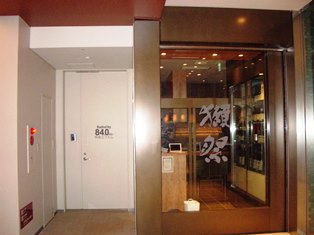
It is a small bar with 8 counter seats and 8 table seats, but it is a restaurant where you can eat light at lunchtime. It is a very fashionable shop with a butterfly tie bartender. The concept of the shop is, "Because I get drunk, I want sake to taste, not to sell." Wow. Humans, unfortunately, get drunk while drinking to taste.
At the entrance of the shop, there is a moderately cool liquor stocker, where you can see the sake of Asahi Sake Brewery. There is also a high-class sake called "Dassai Beyond" for 31,500 yen for 720 ml. I'm just looking forward to seeing Koyu Sake, but I want to taste a rich sake with a cup of sake passing by like a shot bar.
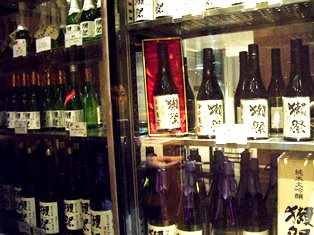
Unfortunately, the venue for the drinking party was already decided on the day, so I just heard the story and left the shop. I think it's good to drink lightly after the next recording of Chuo FM's "I love Chuo-ku" is done in the evening.
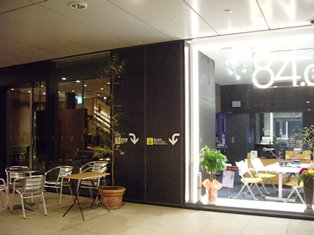
|
Links
|


